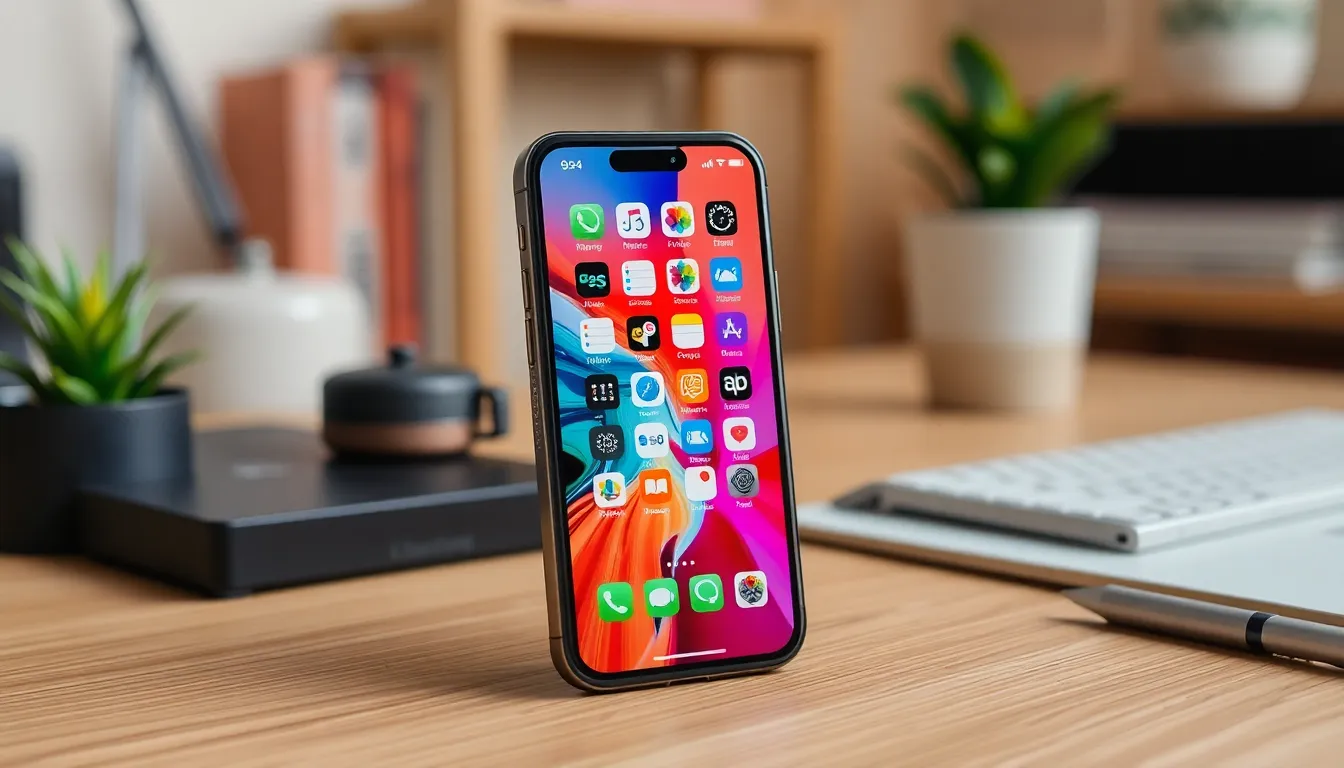Ever looked at your iPhone home screen and thought, “Yawn, this is so last season?” If so, it’s time to give that screen a makeover! Changing the home screen color on an iPhone isn’t just a fun way to express personality; it’s like giving your device a fresh coat of paint without the messy cleanup.
Table of Contents
ToggleUnderstanding Home Screen Customization
Customizing the home screen adds a personal touch to an iPhone, allowing users to express their style. It reflects individuality while enhancing overall user experience.
Importance of Personalizing Your Device
Personalizing a device fosters a sense of ownership. Users often feel more connected to technology that reflects their preferences. Customization can enhance mood and motivation, creating an inviting atmosphere. Small changes contribute significantly to daily interactions with the device, making it uniquely theirs.
Benefits of Changing Home Screen Color
Changing the home screen color improves aesthetics and enhances usability. A vibrant color can increase visibility and make app icons easier to find. Users often report heightened enjoyment when interacting with a visually appealing home screen. Custom colors can also align with seasonal themes or special occasions, keeping the device feeling fresh. Adapting colors according to personal taste can bring a sense of joy each time the device is accessed.
Steps to Change Home Screen Color on iPhone

Changing the home screen color on an iPhone creates a unique personalization experience. This process involves both settings and third-party options.
Using iOS Settings
Navigate to the Settings app. Tap on Display & Brightness for background color options. Select Light or Dark mode to adjust the overall appearance. Access Home Screen settings under Wallpaper to choose a custom wallpaper that complements the desired color scheme. Choose a photo or dynamic wallpaper that enhances your aesthetic while setting the atmosphere you want. Finally, tap Set and select whether to use it for the Home Screen or both the Home and Lock Screens.
Using Third-Party Apps
Explore the App Store for third-party customization apps. Popular options like Widgetsmith or Color Widgets offer flexible color changes. After downloading an app, open it and create custom widgets or shortcuts that reflect preferred colors. Adjust features like background color, fonts, and icon styles to suit personal tastes. Once finished, add these widgets to the home screen by pressing and holding on the screen, tapping the plus sign, and selecting the created widget. This method provides endless possibilities for making the home screen truly one-of-a-kind.
Tips for Choosing the Right Color
Choosing the right color for your iPhone home screen involves careful consideration of various factors. It helps to think about how colors affect mood and perception.
Considering Your Aesthetics
Start by examining personal preferences. Vibrant colors often energize, while softer tones create a calming effect. Complementary color schemes enhance app visibility and aesthetics. Evaluate how your selected color pairs with app icons, backgrounds, and widgets. Keep in mind seasonal themes, like warm hues for fall or cool tones for winter. Experiment with different combinations to find what resonates.
Accessibility Considerations
Color accessibility plays a critical role in usability. Ensure selected colors contrast well to facilitate visibility for all users. Some individuals may experience color blindness, making certain hues difficult to distinguish. Utilizing tools like color palettes can assist in selecting accessible shades. Testing the home screen layout with different colors can help identify visually appealing yet functional options. Prioritize usability alongside aesthetics to enhance the overall experience.
Common Issues and Troubleshooting
Changing the home screen color can sometimes lead to unexpected issues. Identifying and resolving these problems ensures a smooth customization experience.
Color Change Not Applying
Occasionally, users find that their desired color change doesn’t apply. First, verify that the latest iOS version is installed, as updates often fix bugs. Next, refreshing the device by restarting it can make a difference. If the problem persists, check if the selected wallpaper is compatible with color settings. Certain wallpapers may limit color adjustments. Additionally, third-party applications sometimes conflict with system settings. Closing these apps before retrying the process enhances the chances of success.
Resetting Home Screen Settings
Resetting home screen settings might become necessary if customization doesn’t work as intended. This action can restore default configurations without erasing other data. To initiate this reset, navigate to Settings, then tap on General. Locate Transfer or Reset iPhone and choose Reset. Select Reset Home Screen Layout to return to the standard setup. Completing this process may resolve any lingering issues by eliminating custom configurations that obstruct color changes. After resetting, users can start fresh with personalization, ensuring a more seamless experience.
Changing the home screen color on an iPhone offers a unique opportunity for personalization and self-expression. By exploring various customization options users can create a device that truly reflects their style and preferences. Whether opting for vibrant hues to energize the space or softer tones for a calming effect the choice is entirely theirs.
Implementing these changes can enhance not only the aesthetic appeal but also the overall usability of the device. With practical steps and tools available users can easily navigate the customization process. Embracing this simple yet impactful change can lead to a more enjoyable and engaging experience each time they unlock their iPhone.






